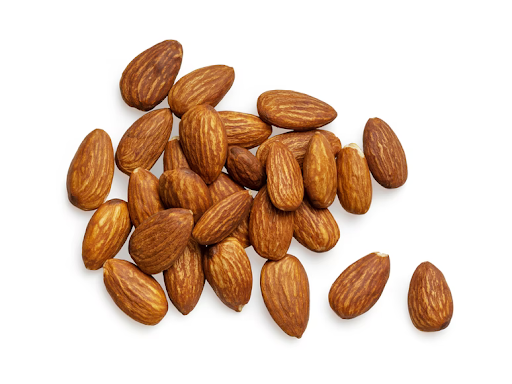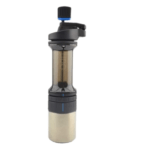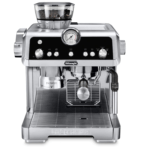Does Almond Milk Curdle?
Looking for a lactose free option for your morning coffee? If so, you may have considered almond milk only to see the horror of it curdling when you pour it into your hot cup of joe.
Curdled milk isn’t dangerous to drink, but it’s enough to not want to drink your coffee anymore. It looks gross and typically a sign of it being expired.
If you’re wondering, ‘Can almond milk curdle?’ the answer is a strong yes. Now, ‘Why does almond milk curdle?’. Because of its structure, it’s common for it to curdle when mixed with hot substances.
This article will go over why this happens and how you can prevent it from happening.

What is Almond Milk?
Almond milk is a plant-based drink made with almonds and water. You can find it at your local grocery store; however, some prefer to make it at home. It’s easy to make – simply blend almonds, water, and then strain the pulp. The entire process takes about 10 minutes.
Why Does Almond Milk Curdle?
There are two main reasons almond milk curdles in coffee: high heat and high acidity.
The proteins in almond milk separate much more quickly than the proteins in dairy alternatives. Heat and acidity cause proteins to separate resulting in curdling.
High Heat
When almond milk is combined with high heat a chemical reaction occurs. The temperature difference causes its atoms to bounce around faster and harder causing the protein structure to fall apart. The milk ends up taking on a different shape and appearance than usual (curdling).
High Acidity
Coffee is high in acidity which plays a major role in why almond milk curdles. The acidity breaks down and curdles it when it encounters coffee’s high acidity. The type of coffee roast you use will vary if or how much it curdles. Darker roasts typically contain less acid than lighter roasts.
Is it Safe to Drink Curdled Almond Milk?
Curdled almond milk may look strange and off-putting, but it’s okay to drink. The curdling aspect is harmless; the issue starts when the milk is close to producing bacteria.
When dairy milk starts to break down it releases bacteria that start producing extra acid and as it gets closer to that point its structure dissolves more easily.
On the other hand, almond milk has a different protein structure. When it breaks down it’s not because it’s going bad but because the protein structure is weaker.
How to Avoid Curdling
Although curdled almond milk isn’t harmful to drink, it does look off-putting. Most coffee drinkers want to find a way to prevent or lessen the amount of curdles in their coffee.
Here are a few steps to take:
- Balance the Temperature. Heating the almond milk before putting it in with the coffee will prevent it from curdling as much because the temperature change won’t be as drastic.
- Mix In Gradually. Instead of pouring in all at once, add it in little by little. Mixing gradually eases the transition, making the coffee break down the milk slower.
- Use Less Acidic Coffee. A sure-fire way to prevent curdling is to use coffee that’s less acidic. Light roasts are high in acidity, so you will have to switch to something more medium-dark. Dark roast is best.
- Dilute the Coffee. If you’re using very acidic coffee, consider diluting it. You’d be surprised that it doesn’t necessarily make your coffee weaker. Just add in a little bit of water before pouring in the milk.
- Use the Right Brands. If you’re buying the almond milk at the store, consider brands like Milk Lab or Blue Diamond. These are less likely to curdle because they’re designed for mixing with coffee.
Final Thoughts
Don’t put up with curdling almond milk. There is a reason it’s happening but also a way to prevent it from occurring. If you find it’s curdling when adding to your hot brew, consider warming it before adding. You should also mix it in gradually and ensure you’re using coffee with little acidity (dark roasts work best).
And, if you decide almond milk is going to be a signature in your coffee, consider frothing it for added texture. It’s a bit more difficult to froth than the dairy alternative, but far from impossible!
With all this information in mind, all that’s left to do is go out there and make yourself a delicious cup of lactose free coffee!





